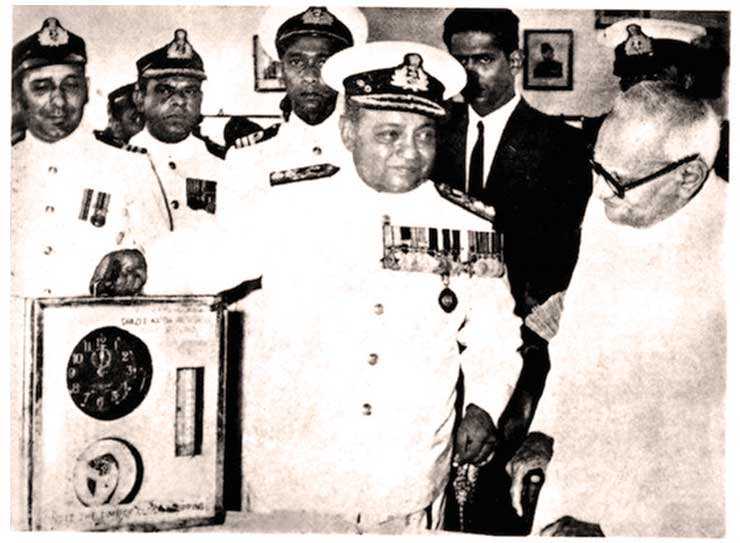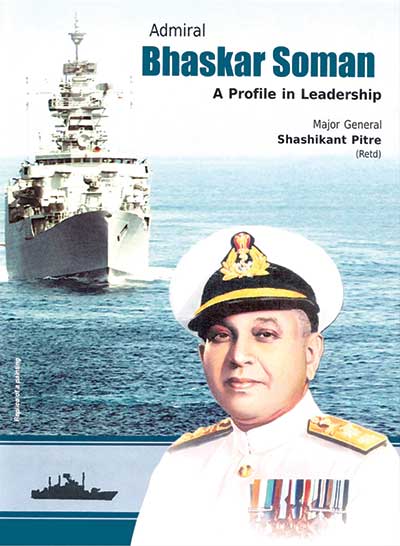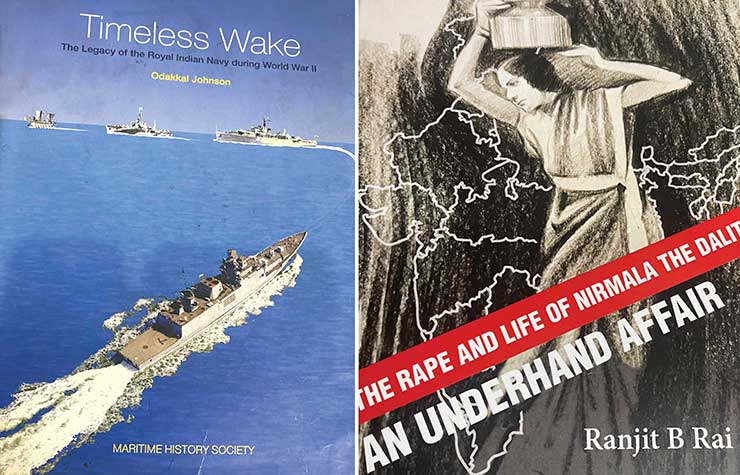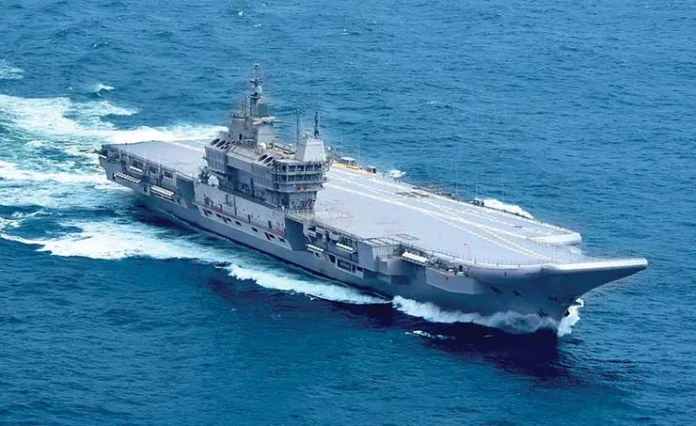The Indian Navy is called the “Silent Service”, as the Navy’s three-dimensional 115 warships, 19 submarines including 2 nuclear submarines and over 200 aircraft, helicopters and drones operate at sea away from the glare of the media and show India’s Flag and exercise abroad with leading Navies. The Ministry of External Affairs (MEA) has set up a maritime division as a force multiplier for India’s diplomatic and humanitarian efforts and domain knowledge of naval officers. A Maritime Security Adviser (MSA) Vice Admiral G Ashok Kumar (retd) has been appointed under the National Security Adviser (NSA) Ajit Kumar Doval to coordinate the Multi-Agency Security Group that held its first meeting on June 30, 2022.
Indian Navy’s pedigree is from the Royal Navy (RN) which Admiral Lord Louis Mountbatten lauded for its actions in World War II. Sir Winston Churchill, Britain’s Prime Minister during the World War II, who won the Nobel Prize in Literature, famously wrote, “War History is written by the winners”. But the Royal Indian Navy’s actions were not included in the naval history despite the heroic actions of the Royal Indian Navy (RIN) officers and ratings in the Red Sea, the Burmese Arakan coast and the Indian Ocean with their strength going from 3,500 to 30,000 and 30 ships between 1939 and 1942.
This void was filled by efforts of late Admirals Manohar Awati and JG Nadkarni and the Maritime History Society of Bombay. Cmde Johnson Oddakal and this writer chronicled war actions of Admiral Ramdas Katari (first Indian Chief of Naval Staff), CNS Admiral BS Soman, SG Karmarkar MBE, N Krishnan, Distinguished Service Cross (DSC) Daya Shankar, DSC, AK Chatterji and others mainly from TS Dufferin, accessing records in the RN Greenwich Library in London. Cmde Oddakal’s book ‘Timeless Wake’ records the legacy of the RIN in World War II and all such officers who were the stewards who charted India’s Navy from 1947 as the senior service till January 26, 1950 when the Navy was cut to size. Those that stayed brought back 16 warships from UK between 1948 to 1960 which included 7,500 tonne large cruisers INS Delhi (1948), Mysore (1957) and 15,000 tonne aircraft carrier INS Vikrant (1961). They spent months in British shipyards and vowed to make Indian Navy a builder’s Navy. They deserve a salute as India celebrates 75 years away from the yoke of British rule which left India a poor nation. Further details can be found in the writer’s novel, ‘An Underhand Affair’ (ISBN 7893 88644 167).
In the 1965 War, the Government lacking expertise to employ the Navy, ordered it not to venture above the latitude of Porbunder, despite protestations by Admiral BS Soman. The spotlight only shines on the Indian Navy on Navy Day for a week from December 4 every year, when it commemorates the day in 1971 when the Osa class missile boats struck Karachi in Operation Trident with their long range Rangout radars and Styx missiles, and sank three Pakistani ships off Karachi, and in Operation Python five days later Navy struck Kemari oil tanks. The Navy’s actions have gone down in the annals of Naval Warfare as a Revolution in Military Affairs (RMA). The Navy played a supporting role in hastening the Pakistani surrender in the East in 14 days to establish Bangladesh with the naval Mukhti Bahini. The naval brass doubled efforts and made it a Builder’s Navy by 1990. In the 1999 Kargil half war, the Navy laid a blockade around Pakistan called the Naval Manoeuvre in Operation Talwar to support the Army which hastened Pakistan’s withdrawal. In the 2004 Tsunami, Navy’s prompt humanitarian actions, faster than the US Navy, to help neighouring countries were highlighted by the world media.

The waters of the Indian Ocean wash the shores of 40 nations and oceans have always held importance. India’s maritime geography and its Navy are India’s assets in the 21st Century. The Indian Ocean occupies a vital place in India’s national security and India’s economic prosperity and this has been articulated and acted on by Prime Minister Narendra Modi with the initiatives of Security And Growth for All in the Region (SAGAR), Mausam and Sagarmala.
The Navy’s emphasis has been on training and technology, and has ensured it keeps up with innovation which can be only listed in pages. All executive officers are now Bachelors of Engineering (BE), which is paying dividends to make the Navy adopt indigenous technology, even though its budgets are the lowest among the services. Indian Navy’s planners have now built over 80 warships in India, which signify its increasing strides towards Aatmanirharata (self-reliance). Quite early the Navy energised its Naval Ship and Submarine Design Bureau (DGND) and also set up a classified R&D group called the Weapons Electronics Engineering Systems Establishment (WEESE) to support naval designers with modern software, upgrades in refits of ships and secure communication systems. WEESE also designed modems for space, voice and digital data connectivity with ISRO’s GSAT-7 Rukmini programmes, supported cyber security and designed indigenous command and control systems on ships saving millions in foreign exchange. Only few main propulsion engines and advanced radars, helicopters and a few weapon systems are imported now.
 Not being a signatory to Nuclear Non-Proliferation Treaty (NPT), the Government realised the need for nuclear submarines and set up the classified DRDO Advanced Technology Vessel (ATV) Project. It was promoted by late Dr Raja Ramana, Chairman, Department of Atomic Energy (DAE) and Dr V S Arunachalam, Secretary, Defence Research and Development Organisation (DRDO) with funding and support from the Prime Minister’s Office (PMO), under a Naval Admiral. India’s Bhabha Atomic Research Centre (BARC) Mumbai trained Naval officers and designed a miniature uranium reactor and constructed a shore training half submarine with a shaft, gear box and a propeller at Kalpakam at the Indira Gandhi Atomic Research Centre (IGARC). Anil Anand, a French-trained reactor scientist and late Dr Sekhar Basu who went on to serve as the Chairman of the DAE, commissioned the training reactor (S1) along with selected naval officers on September 22, 2006. It was a strategic game changer for India’s nuclear deterrence.
Not being a signatory to Nuclear Non-Proliferation Treaty (NPT), the Government realised the need for nuclear submarines and set up the classified DRDO Advanced Technology Vessel (ATV) Project. It was promoted by late Dr Raja Ramana, Chairman, Department of Atomic Energy (DAE) and Dr V S Arunachalam, Secretary, Defence Research and Development Organisation (DRDO) with funding and support from the Prime Minister’s Office (PMO), under a Naval Admiral. India’s Bhabha Atomic Research Centre (BARC) Mumbai trained Naval officers and designed a miniature uranium reactor and constructed a shore training half submarine with a shaft, gear box and a propeller at Kalpakam at the Indira Gandhi Atomic Research Centre (IGARC). Anil Anand, a French-trained reactor scientist and late Dr Sekhar Basu who went on to serve as the Chairman of the DAE, commissioned the training reactor (S1) along with selected naval officers on September 22, 2006. It was a strategic game changer for India’s nuclear deterrence.
The ATV steering committee selected and acquired the Spasskiy 6,500 tonne 83mw single reactor design from Rubin Consultancy along with intellectual property rights (IPRs) called Normatives (limits) to modify the design within parameters. The Navy with hindsight of building Leanders and improving on them at Mazagon Docks, seeing the slow progress of ab initio designing of the naval LCA, pushed hard for the purchase of the design and Russian consultancy for safety in this new technology.
For construction of Arihant (S2), the Navy pressed on a public-private partnership model (PPP) with the ATV Board headed by a Naval Admiral and argued that a Public Private Partnership (PPP) model would enable participation of India’s private sector and MSMEs (micro, small and medium enterprises) and high-technology laboratories to build sub-assemblies to drawings and digital control systems. Larsen & Toubro Ltd (L&T) which had a heavy engineering facility and experience in building nuclear plants at Hazira was selected. The Navy leased a dry dock and a jetty to L&T at the Naval Dockyard at Visakhapatnam and with the help of DRDO, set up a Ship Building Centre (SBC) and workshops to construct nuclear submarines on Soviet lines. Currently, a new base Varsha is coming up South of Visakhapatnam at Rombili with facilities set up by BARC for nuclear support.
INS Arihant and Arighat were assembled in modular blocks under with precision welding. Russia provided critical parts to BARC and other agencies for miniaturising the nuclear reactor. Arihant’s hybrid reactor was fired for criticality by BARC’s Dr Usha Paul, later decorated for designing the safe shutdown of the reactor in emergency (SCRAM). It was commissioned in November 2016 without any fanfare. The commissioning date of Arighat has not been publically announced.

The Navy adheres to a Maritime Capability Perspective Plan (MCPP), and has built world class 500 km anti-ship cum surface Brahmos, and 60 km Barak AA missiles and fitted them on ships. It has fitted the underwater 650 km K-15/BO-05 nuclear capable missiles in Arihant. The nuclear capable 3000 km K-4 has been tested from an underwater launcher. The latest indigenous ships inducted into include the three Type 15A Kochi class destroyers, one Type 15B INS Visakhapatnam, three Type 17 Shivalik class frigates, four of six Scorpene submarines and three P28 Kamorta class Corvettes with 90% Indian content and a host of smaller platforms. All Navy’s airborne, surface and sub-surface platforms are networked over a common data link using multiple means of communication including Rukmini.

The Navy is supported by a 17,000-strong Coast Guard with over 35 large platforms and is responsible for law enforcement and coastal and maritime patrol. It is the guardians of India’s coastline of 7516. 6 km (4,671 miles) and increasing 2.4 mill sq km of Economic Exclusive Zone (EEZ) to maintain peace and stability for flourishing of trade and India’s Blue economy. The Navy ships and its 12 P-8I 737 MR aircraft scour the seas for Maritime Domain Awareness (MDA) and deterrence and feed MDA into a world class fusion fed Information Management and Analysis Centre (IMAC). The future plans for 39 ships is in various stages of building.
As India celebrates 75 years the Navy has many credits for the nation to laud as it looks to commission its own home-built aircraft carrier 40,000 tonne INS Vikrant with MiG-29K fighters on August 15, which will be a great achievement. Only six nations can build aircraft carriers. The commissioning of Arighat may be also announced with greater capability. Sham No Varunaḥ!
–The writer is an Indian Navy veteran, former DNO and DNI. He writes and broadcasts on military affairs and is Curator of New Delhi’s only Maritime Museum at C 443 Defence Colony with free entry to bring about Sea Mindedness. The views expressed are personal and do not necessarily reflect the views of Raksha Anirveda
The writer is a naval author and curates a Maritime Museum at C 443 Defence Colony, New Delhi and writes and lectures on maritime issues.






